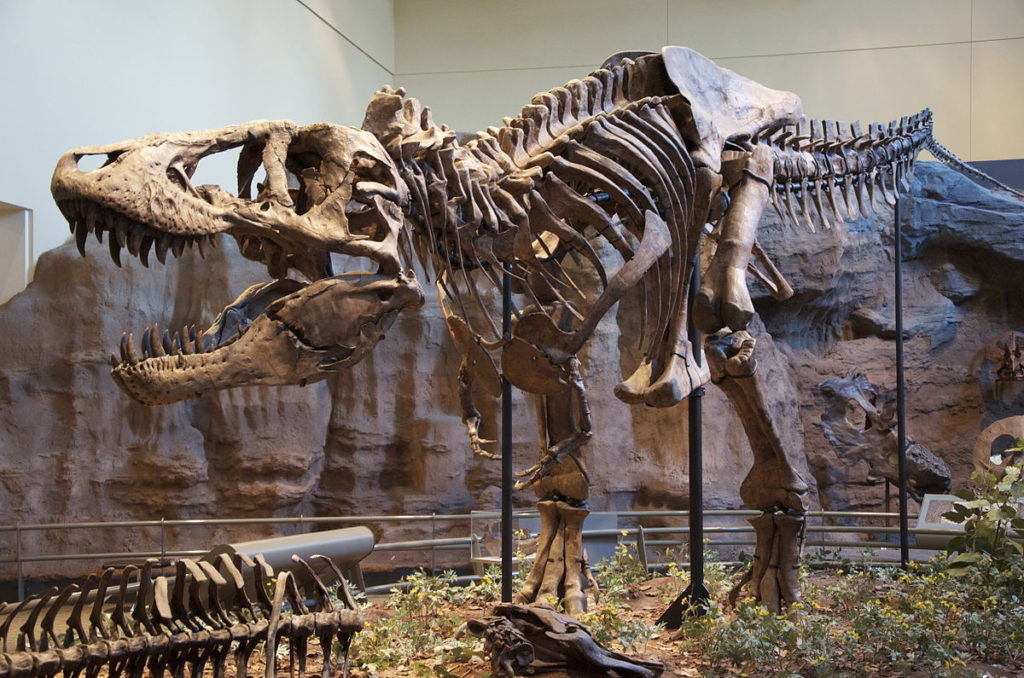Table of Contents
REAL DINOSAURS
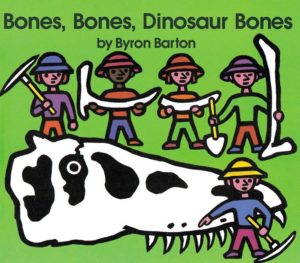
|
In Byron Barton’s Bones, Bones, Dinosaur Bones (HarperFestival, 1990), six paleontologists in different-colored pith helmets hunt for dinosaur bones, dig them up, wrap them and send them to the museum, and then assemble a dinosaur skeleton. For ages 3-6. |

|
Bob Barner’s Dinosaur Bones (Chronicle Books, 2001) – illustrated with great paper-collage pictures – pairs a simple rhyming text (in big splashy print) with snippets of scientific fact (in smaller, more official-looking print). For ages 3-8. |
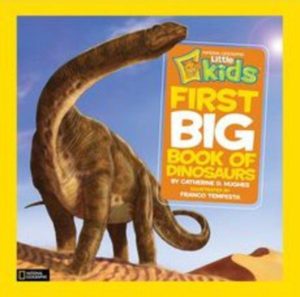
|
By Catherine D. Hughes, National Geographic’s First Big Book of Dinosaurs (National Geographic Children’s Books, 2011) covers dinosaurs in ascending order of size, from Small to Big, Giant, and Gigantic. For each, there’s a reader-friendly description, a quick Facts box, and a pronunciation guide. The book is filled with activity suggestions and interactive questions and has great realistic illustrations by Franco Tempesta. A good pick for ages 4-8. |
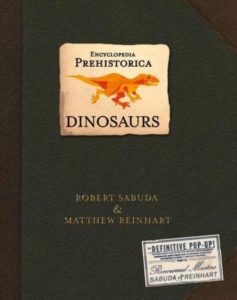
|
By master paper engineer Robert Sabuda, Encyclopedia Prehistorica: Dinosaurs (Candlewick, 2005) pairs basic information with 35 spectacular pop-up dinosaurs. For ages 4 and up. |
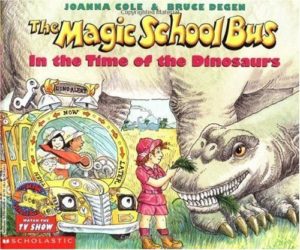
|
In Joanna Cole’s The Magic School Bus in the Time of the Dinosaurs (Scholastic, 1995), everyone’s favorite teacher Ms. Frizzle – whose clothes I crave, especially that dress covered in vegetables – transports her class back in time for a tour of the Triassic, Jurassic, and Cretaceous Periods, with a stop-off at a Maiasaura nesting ground. Much of the information is conveyed through hand-written and illustrated student reports. For ages 4-8. |
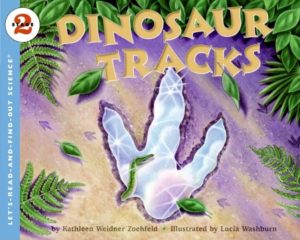
|
By Kathleen Weidner Zoehfeld, Dinosaur Tracks (HarperCollins, 2007) in the Let’s-Read-and-Find-Out Science series explains how fossil footprints form and what we can learn from them. For ages 4-8. |
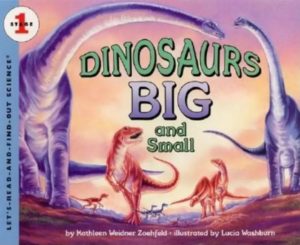
|
In the same series by Zoehfeld, see Dinosaurs Big and Small (HarperCollins, 2002) which discusses the range of dinosaur sizes in terms of recognizable measures, such as an average-size kid, a school bus, and an elephant – a great link to math – Where Did Dinosaurs Come From? (HarperCollins, 2010), which covers fossil clues to the evolution of dinosaurs; and Did Dinosaurs Have Feathers? (HarperCollins, 2003) which covers the first discovery of early feathers in a fossilized Archaeopteryx, Chinese fossils of feathered dinosaurs, and the link between dinosaurs and modern birds. For ages 4-8. |
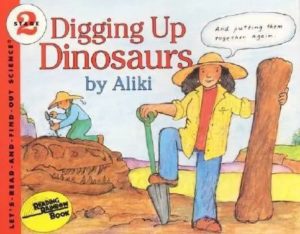
|
Aliki’s Digging Up Dinosaurs (HarperCollins, 1988) in the Let’s-Read-and-Find-Out Science series not only covers digging up dinosaurs, but the process of putting them back together again. The illustrations are wonderful, with detailed dinosaur skeletons, clever little cartoon people with dialogue in cartoon bubbles, and – on the cover – a female paleontologist. For ages 4-9. |
| Related books by Aliki are My Visit to the Dinosaurs (HarperCollins, 1985), Dinosaur Bones (HarperCollins, 1990) and Fossils Tell of Long Ago (HarperCollins, 1990). | |
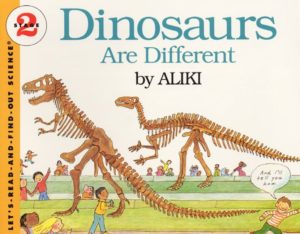
|
Aliki’s Dinosaurs Are Different (HarperCollins, 1986) provides more detailed information than is found in the usual elementary dino book. Dinosaur differences are anatomic and taxonomic: the author explains the dinosaur family tree and shows the differences between the two orders of dinosaurs: the lizard-hipped saurischians and the bird-hipped ornithischians. Pictures, with color-coded bones, show readers how to tell them apart. Additional information is provided through kids exchanging dinosaur facts in cartoon conversation balloons. For ages 5-9. |
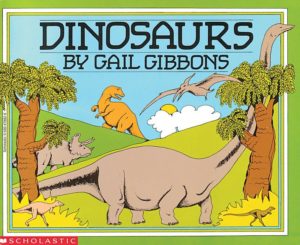
|
By Gail Gibbons, Dinosaurs! (Holiday House, 2009) is a straightforward introduction to paleontology and dinosaurs – beginning with the massive meteor that hit the earth, bringing the Age of Dinosaurs to an end. Gibbons covers the Triassic, Jurassic, and Cretaceous periods, profiles 14 different dinosaurs, and discusses dinosaur discoveries. For ages 5-9. |
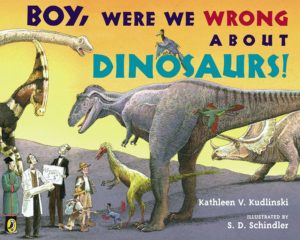
|
Kathleen V. Kudlinski’s Boy, Were We Wrong about Dinosaurs (Puffin, 2008) describes our changing beliefs about dinosaurs, beginning with the ancient Chinese, who thought the giant bones belonged to dragons. Theories continue to change today, as we discover more about dinosaur anatomy and behavior. For ages 6-9. |
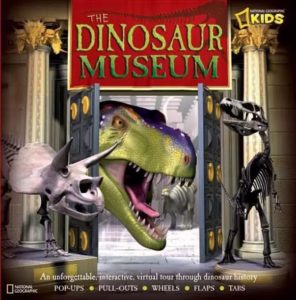
|
The National Geographic Society’s The Dinosaur Museum (National Geographic Children’s Books, 2006) is a fabulous interactive tour of a natural history museum, with pop-up fossils, a dinosaur timeline, a sliding dinosaur size chart, and all kinds of fascinating flaps, tabs, and wheels. For ages 5-11. |
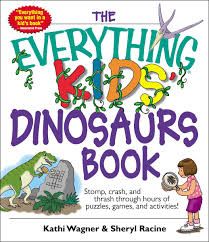
|
By Kathi Wagner and Sheryl Racine, The Everything Kids’ Dinosaurs Book (Adams Media, 2005) is a 144-page collection of information, activities, recipes, and puzzles. Included are Words to Know (say, paleontologist) and jokes. For ages 8-12. |
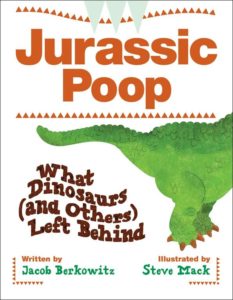
|
Jacob Berkowitz’s Jurassic Poop: What Dinosaurs (and Others) Left Behind (Kids Can Press, 2006) – a sure hit with the dinosaur-and-potty-humor crowd – is filled with helpful information about preserved dung and what scientists learn from it. Readers learn the formal name for fossilized poop, which is coprolite. For ages 8-12. |
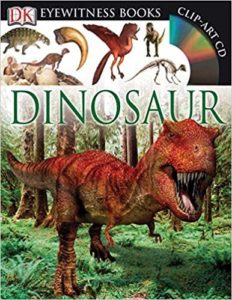
|
David Lambert’s Dinosaur (Dorling Kindersley, 2010) in the Eyewitness series covers a wide range of dinosaur topics in a series of spectacularly illustrated double-page spreads. Among the topics covered are the dinosaurs of various geologic periods, dinosaur evolution, meat-eaters and plant-eaters, feathered dinosaurs, eggs and young, fossils, and dinosaur classification. Included is a discovery timeline and a glossary. For ages 8 and up. |
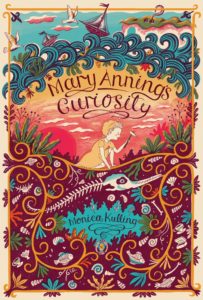
|
By Monica Kulling, Mary Anning’s Curiosity (Groundwood Books, 2017) is the story of early 19th-century paleontologist Mary Anning, who made her first major fossil discovery at the age of twelve when she found an ichthyosaurus in the cliffs near her home on the southern coast of England. For ages 9-13. |
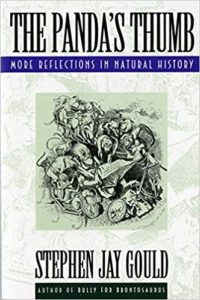 |
Stephen Jay Gould’s natural history collections are a great science resource for teenagers and adults. None are all about dinosaurs, but most include a number of interesting dinosaur essays. Check out The Panda’s Thumb (W.W. Norton & Company, 1992) for “Were the Dinosaurs Dumb?” and “The Telltale Wishbone.” See Books by Stephen Jay Gould. |
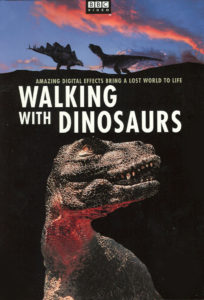 |
Walking with Dinosaurs is a six-part series from the BBC: episode titles are New Blood, Time of the Titans, Cruel Sea, Giant of the Skies, Spirits of the Ice Forest, and Death of a Dynasty. Available on DVD or as an Amazon Instant Video. |
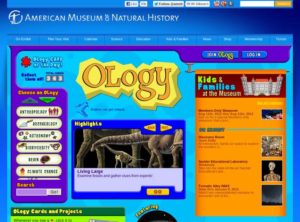 |
Paleontology: The Big Dig has information, games, experiments and projects on fossils and dinosaurs from the American Museum of Natural History. |
